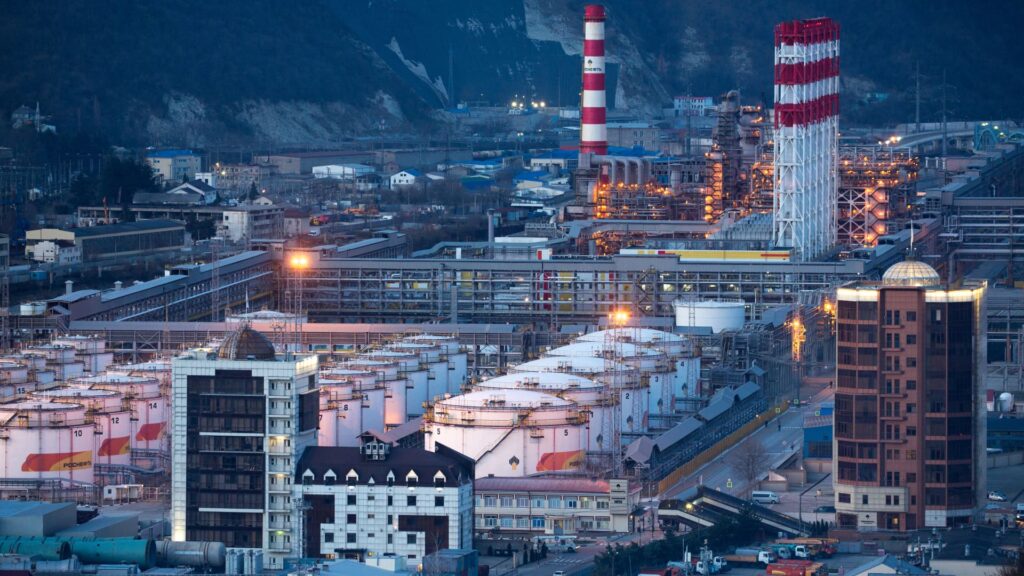Oil storage tanks stand at the RN-Tuapsinsky refinery, operated by Rosneft Oil Co., at night in Tuapse, Russia.
Andrey Rudakov | Bloomberg | Getty Images
Oil prices surged as much as 8% at the open after OPEC+ announced it was slashing output by 1.16 million barrels per day.
Brent crude futures last jumped 5.07% to $83.95 a barrel on that news, and U.S. West Texas Intermediate crude futures soared 5.17% to $79.59 a barrel.
The voluntary cuts will start from May to end 2023, Saudi Arabia announced, saying it was a “precautionary measure” targeted toward stabilizing the oil market.
The move comes on the back of Russia’s decision to trim oil production by 500,000 barrels per day until the end of 2023, according to the country’s Deputy Prime Minister Alexander Novak.
Other member states have also pledged respective cuts, with OPEC Kingpin Saudi Arabia reducing 500,000 barrels per day and UAE cutting 144,000 barrels per day, amongst other cutbacks from Kuwait, Oman, Iraq, Algeria and Kazakhstan.
“The selected involvement of the largest OPEC+ members suggest that adherence to production cuts may be stronger than has been the case in the past,” Commonwealth Bank of Australia’s Vivek Dhar said in a note.
Oil at $100 per barrel?
“OPEC+’s plan for a further production cut may push oil prices toward the $100 mark again, considering China’s reopening and Russia’s output cuts as a retaliation move against western sanctions,” CMC Markets’ analyst Tina Teng told CNBC.
Teng noted, however, that the cut could also reverse the decline in inflation, which would “complicate central banks’ rate decisions.”
In March, oil prices tumbled to their lowest since December 2021, as traders feared the banking rout could dent global economic growth.
They’re looking into the second half of this year and deciding they don’t want to relive 2008.
Bob McNally
Founder of Energy Aspects
The oil cartel and its allies are looking to avoid a repeat of the 2008 crash, one analyst said.
“They’re looking into the…
Read the full article here





